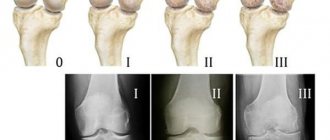Diuretics remove excess fluid from the body. Stimulate urine excretion by inhibiting the reabsorption of sodium ions in the renal canals. They have many useful properties. They are widely used in medicine for the treatment of disorders and diseases. The drugs are used for: peripheral edema, for the normal functioning of the kidneys, removal of toxins, removal of excess fluid from cavities, diseases of the heart and blood vessels.
There are several different types of diuretics, differing in chemical structure and mechanism of action. They are divided into: short-acting saline, potassium-containing, taizide. Diuretics are used for weight loss. Removes large amounts of fluid and reduces weight. They have a cleansing effect and remove decay products. They have a positive effect on the condition of the skin and the health of the body. During the period of use, you must adhere to a certain diet and exercise regularly.
History of the origin of diuretics
Over the years, scientists have tried to discover organic and inorganic substances to treat edema. In the early 16th century, weak diuretics were used. Such as sea onion and calomel. In the 20s of the last century, people began to use mercury-containing substances to reduce swelling.
In 1950, the first taizide diuretics, chlorothiazide and hydrochlorothiazide, were synthesized. They are close in chemical structure to sulfonamides. In 1960, the structure of substances was modified. More effective loop diuretics, furosemide and ethacrynic acid, have been created. Diuretics with antikaliuretic activity have been synthesized. The drugs began to be widely used in medicine to treat diseases.
When are diuretics used?
Due to the diuretic effect of diuretics, they are used in the complex treatment of diseases and disorders in the body that are accompanied by edema. First of all, we are talking about diseases of the heart and blood vessels. Diuretics eliminate fluid retention and excess salts, which helps:
- normalize the balance of mineral compounds;
- lower blood pressure;
- ease the work of the heart;
- reduce swelling of the limbs;
- get rid of congestion in the lungs.
When combined with other medications, diuretics relieve shortness of breath and other symptoms of chronic heart failure.
In addition to cardiac diseases, diuretics are used in the treatment of a number of other diseases. Diuretics are used for chronic renal failure and nephrotic syndrome (edema), liver cirrhosis, glaucoma, diabetes insipidus, gout, neonatal edema syndrome, neurological diseases that lead to increased intracranial pressure.
Mechanism of action of diuretics
The main mechanism of action of diuretics is their effect on the kidneys. First of all, on the structural and functional unit or nephron, where the processes of glomerular filtration, tubular reabsorption and secretion occur. To better understand the action of diuretics, it is necessary to consider the process of kidney functioning and the mechanism of urine formation.
Each kidney contains approximately 1 million nephron formations that do not communicate with each other. They consist of a vascular glomerulus (glomerulus), a glomerular capsule and tubules. In the renal glomerulus, plasma is filtered from the capillaries into the capsule cavity. The endothelium of the capillaries does not allow the penetration of blood elements and proteins.
The resulting filtrate is called primary urine. Subsequently, it penetrates the kidney tubules. The filtration process in the kidneys occurs due to the difference between the arterial and oncotic pressure of the blood plasma. A decrease in blood pressure leads to a decrease in the filtration rate in the kidneys. Increasing blood pressure increases the filtration rate.
The glomerular filtration rate depends not only on the blood supply to the kidneys, but also on the number of functioning nephrons. On average, glomerular filtration in an adult is 100 ml per minute. Every day, the human body filters about 200 liters of liquid. Urine is released on average about 2 liters. About 99% of primary urine is reabsorbed in the tubules.
The reabsorption process occurs throughout the nephron. To increase the amount of urine excreted, the glomerular filtration rate must be increased. The process of urine formation ends in the distal nephron and collecting ducts. Transport processes are regulated by hormonal influences. Taking diuretics helps increase the rate of urine formation. Reduce the amount of primary urine that is affected by the reabsorption process.
The clinical use of diuretics almost universally preceded the localization of their site of action. The consequence of diuretic specificity predicts clinical use and side effects, and the proximity of sodium transporters, one to another, often dictates the potency or effectiveness of the diuretic. All diuretics act by inhibiting the normal transport of sodium from the filtrate into the renal tubular cells. This movement of sodium into renal epithelial cells from the apical side is facilitated by a number of transporters, the function of which in turn depends on adenosine triphosphate (ATP), a Na-K dependent cotransporter on the basolateral side of the cell. Growing understanding of the physiology of sodium transport has generated new opportunities for the development of diuretics.
Natural Diuretics
A natural diuretic diet is prescribed when there are contraindications to taking medications. People suffering from problems of the gastrointestinal tract, heart, and respiratory system. Experts include diuretic fruits, vegetables and herbs in weight loss diets.
Products with a diuretic effect:
- Watermelon.
- Cherry.
- Cranberry.
- Blueberry.
- Lemon.
- Melon.
- A pineapple.
- Pomegranate.
- Quince.
- Cabbage.
- Tomatoes.
- Beet.
- Onion.
- Carrot.
- Celery.
- Cucumber.
- Parsley dill.
- Ginger.
- Green tea.
- Nettle.
The products have a mild diuretic effect. Rich in vitamins, minerals and antioxidants. It must be consumed raw, prepared in juices and smoothies. During heat treatment, cooking and long-term storage, the energy value decreases.
Types of diuretics
The main purpose of diuretics is to speed up urine excretion by the kidneys and slow down reabsorption. Different types of diuretics differ from each other in their mechanisms of action. Diuretics remove not only excess fluid from the body, but also important electrolytes. Such as: calcium, magnesium, sodium, potassium, chlorine. It is important to maintain a balance and not increase the established dosages on your own without consulting a specialist.
There are several groups of diuretic drugs:
1. Potassium-sparing.
They have a mild diuretic effect. They act by blocking sodium channels in the epithelium. Reduces potassium excretion by the kidneys. Used in combination with other drugs to stimulate the diuretic and hypotensive effects of thiazide and loop diuretics. Minimize potassium loss. Increase the excretion of sodium, water, salts.
2.Loop
They have a strong diuretic effect. Fast-acting diuretics come in the form of chemically different compounds. They contain a sulfonamide group in their structure. They act in the thick segment of the ascending loop of Henle, located in the kidney. They have a relaxing effect on the smooth muscles of blood vessels. Increases renal blood flow. Reduce the amount of intercellular fluid. Increases the excretion of sodium, chlorine, potassium, magnesium, and calcium from the body.
3. Taizidnye.
Contains sulfonamide derivatives of benzothiadiazine and non-thiazide sulfonamides. They block the transport of calcium and sodium in the distal convoluted tubules. Stimulates the synthesis of prostacyclin.
4. Osmodiuretics.
They have a specific mechanism of action. They delay the reabsorption of water. Does not affect potassium excretion.
PHARMACOTHERAPY OF HYPERTENSION. PART 2. DIURETICS AS ANTIHYPERTENSIVE DRUGS
Information about various groups of diuretic drugs is presented, their pharmacodynamics, mechanism of action and side effects are described. Recommendations are given for the combined use of diuretics for osteoporosis and diabetes mellitus concomitant with arterial hypertension.
The paper presents information of different groups of diuretics, describes their pharmacodynamics, mechanism of action and side effects. Recommendations are given on combined diuretic therapy for contaminant arterial hypertension, osteoporosis, and diabetes mellitus.
B.A. Sidorenko, D.V. Preobrazhensky - Medical Center of the Administration of the President of the Russian Federation, Moscow
BA Sidorenko, DV Preobrazhensky – Medical Center, Administration of Affairs of the President of the Russian Federation, Moscow
* Part I see No. 8
Part II* Diuretics as antihypertensive drugs
Diuretics began to be used for long-term treatment of hypertension and other forms of arterial hypertension in the late 50s; the first thiazide diuretic, chlorothiazide, was created in 1957. In the 60s, benzothiadiazine derivatives with a stronger diuretic effect than chlorothiazide were synthesized; Among these drugs, hydrochlorothiazide is the most widely used. Thiazide diuretics were initially used as second-line antihypertensive drugs when reserpine, guanethidine, methyldopa and hydralazine, which were then used, were insufficiently effective. But quite soon it became clear that thiazide diuretics themselves are effective antihypertensive drugs and can be used for long-term monotherapy of hypertension. Along with benzothiadiazine derivatives, some heterocyclic compounds have a moderate sodium and diuretic effect - phthalimidines (chlorthalidone, clorexolone), quinazolinones (metolazone, hinetazone), chlorobenzamides (clopamide, indapamide, xipamide) and benzenesulfonamides (mefruzide). These heterocyclic compounds are usually called thiazide-like diuretics. In the early 60s, the so-called “loop” diuretics were created almost simultaneously - fruzemide (furosemide) in Germany and ethacrynic acid in the USA. Furosemide and ethacrynic acid differed from thiazide diuretics in having a significantly more potent sodium and diuretic effect, possible due to the fact that they act throughout the thick part of the ascending limb of the loop of Henle. Furosemide and ethacrynic acid are used mainly in the treatment of heart failure (both acute and chronic), as well as hypertensive crises. The antihypertensive effect of loop diuretics is generally less pronounced than that of thiazide and thiazide-like diuretics. Therefore, until recently they were not considered as first-line antihypertensive drugs for long-term treatment of hypertension. Loop diuretics were recommended for use as antihypertensive drugs only in patients with concomitant renal failure, in which thiazide diuretics are usually ineffective. Potassium-sparing diuretics (amiloride, triamterene, spironolactone) are rarely used as monotherapy for the treatment of hypertension, although there is evidence that spironolactone has fairly high antihypertensive activity. Potassium-sparing diuretics are usually prescribed in combination with thiazide and loop diuretics to reduce potassium loss.
Thus, currently, three main groups of diuretic drugs are used in the treatment of hypertension:
|
Clinical pharmacology of diuretics
Diuretics can be classified in different ways; for example, by chemical structure, by the mechanism of diuretic action (saluretics and osmotic diuretics), by the localization of action in the nephron. Diuretics are often divided into three groups depending on the site of their action in the nephron, which determines the severity of the natriuretic effect, expressed as a percentage of excreted sodium from the total amount of sodium filtered in the glomeruli. Potent diuretics
(i.e., causing excretion of more than 15–20% of filtered sodium): • organic mercury compounds (not currently used in clinical practice);
• derivatives of sulfamonlanthranilic acid (furosemide, bumetanide, pyretanide, torasemide, etc.); • derivatives of phenoxyacetic acid (ethacrynic acid, indacrinone, etc.). Diuretics with a moderately pronounced natriuretic effect
(i.e., causing the excretion of 5-10% of filtered sodium): • benzothiadiazine derivatives (thiazides and hydrothiazides) - chlorothiazide, hydrochlorothiazide, bendroflumethiazide, polythiazide, cyclothiazide, etc.;
• heterocyclic compounds similar in the mechanism of tubular action to thiazide diuretics - chlorthalidone, metolazone, clopamide, indapamide, xipamide, etc. Low-acting diuretics
(i.e., causing excretion of less than 5% of filtered sodium): • potassium-sparing diuretics - amiloride, triamterene, spironolactone;
• carbonic anhydrase inhibitors – acetazolamide, etc.; not used in the treatment of arterial hypertension; • osmotic diuretics – mannitol, urea, glycerin, etc.; are not used in the treatment of arterial hypertension. Thiazide, loop and potassium-sparing diuretics used in the treatment of hypertension are distinguished by the site of action at the level of the renal tubules. Thus, thiazide and thiazide-like diuretics suppress the reabsorption of sodium ions at the level of that part of the thick segment of the ascending limb of the loop of Henle, which is located in the renal cortex, as well as in the initial part of the distal tubules. Loop diuretics have been said to affect the reabsorption of sodium ions in that part of the thick segment of the ascending limb of the loop of Henle, which is located in the renal medulla. Finally, potassium-sparing diuretics inhibit the reabsorption of sodium ions at the level of the distal convoluted tubule and collecting duct. Thiazide and thiazide-like diuretics
are characterized by a more moderate natriuretic (and diuretic) and longer-lasting effect than loop diuretics, which is explained by the localization of their action in the nephron (Table 1).
The localization of the renal effects of thiazide diuretics determines their other features. The greatest diuretic effect is achieved when prescribing relatively low doses of thiazide diuretics, i.e. they have a relatively low “ceiling”. The above applies not only to the diuretic, but also to the antihypertensive effect of thiazide and thiazide-like diuretics. Thus, relatively low doses of diuretics (12.5–25 mg of hydrochlorothiazide per day or equivalent doses of other thiazide diuretics) cause a significant decrease in blood pressure (BP). With further increases in the dose of thiazide diuretics, the antihypertensive effect increases only to a small extent, but the incidence of hypokalemia and other serious adverse reactions increases significantly [1]. Table 1. Comparative characteristics of diuretics used in the treatment of hypertension
| Drugs | Bioavailability, % action, h | Elimination duration | Main path |
| Thiazide and thiazide-like diuretics | |||
| Hydrochlorothiazide | 60–80 | 6–18 | Kidneys |
| Indapamide | … | 12–24 | Kidneys + liver |
| Xipamide | 90 | 12–24 | Same |
| Metolazone | 50–60 | 12–24 | |
| Chlorthalidone | 65 | 24–72 | Kidneys+liver |
| Chlorothiazide | 10 | 6–12 | Kidneys |
| Loop diuretics | |||
| Bumetanide | 60–90 | 2–5 | Kidneys + liver |
| Torasemide | 80–90 | 6–8 | Same |
| Furosemide | 10–90 | 2–4 | Kidneys |
| Potassium-sparing diuretics | |||
| Amiloride | 50 | 6–24 | Kidneys |
| Triamterene | 50 | 8–12 | Kidneys + liver |
| Spironolactone | 70 | 3–5 days | Liver |
| Note. Literature data regarding the duration of action of various diuretics are extremely contradictory: compare Z. Opte [1], M. Kaplan [2], as well as R. Ureger et al., “Diuretics” (1995) or E. Brauhwald” Heart disease ( 1997). | |||
In addition, the diuretic, and therefore the antihypertensive effect of thiazide diuretics is significantly weakened in patients with renal failure (serum creatinine level above 2.0 mg/dL; glomerular filtration rate less than 30 ml/min). For this reason, thiazide and thiazide-like diuretics are not recommended for the treatment of hypertension in patients with impaired renal function [2]. Thiazide diuretics (unlike loop and potassium-sparing diuretics) reduce the excretion of calcium ions in the urine. The calcium-sparing effect of thiazide and thiazide-like diuretics allows them to be prescribed for the treatment of arterial hypertension in patients with concomitant osteoporosis. Osteoporosis, as is known, often occurs in women after menopause, as well as in elderly patients leading a sedentary lifestyle, and predisposes to bone fractures, in particular the femoral neck. According to some observations, bone fractures in hypertensive patients receiving thiazide diuretics for a long time are observed less frequently than in patients receiving other antihypertensive drugs. Given the calcium-sparing effect of thiazide diuretics, they are currently considered first-line antihypertensive drugs in the treatment of patients with hypertension in combination with osteoporosis [3]. Along with the natriuretic effect, all thiazide diuretics increase the urinary excretion of potassium and magnesium ions and at the same time reduce the excretion of uric acid. Therefore, thiazide, as well as loop diuretics, are contraindicated in patients with hypokalemia (normal serum potassium level 3.5–5.0 mmol/l), gout or hyperuricemia (normal blood uric acid level in men 3.6–8. 5 mg/dl, in women – 2.3–6.6 mg/dl). Table 2. Diuretics used for long-term therapy of hypertension
| Drugs | Average doses (mg/day) | Typical side effects |
| Thiazide and thiazide-like diuretics | ||
| Hydrochlorothiazide | 12,5–50 | Hypokalemia, hypomagnesemia, hyperuricemia, disorder glucose tolerance, hypertriglyceridemia, hyper- cholesterolemia, impotence, hyponatremia, hypochloremia alkalosis (indapamide causes minor changes in blood lipid composition) |
| Indapamide | 1,25–5 | |
| Klopamide | 10–20 | |
| Xipamide | 10–40 | |
| Metolazone | 2,5–5 | |
| Chlorthalidone | 12,5–50 | |
| Loop diuretics | ||
| Bumetanide | 0,5–4 | Hypotension, hypokalemia, hypomagnesemia, hyperuricemia, hyponatremia, impaired glucose tolerance, hypo- chloremic alkalosis, hypercalciuria, hearing loss (ethacrynic acid does not contain a sulfhydryl group and is the most ototoxic) |
| Torasemide | 2,5–10 | |
| Furosemide | 40–240 | |
| Ethacrynic acid | 25–100 | |
| Potassium-sparing diuretics | ||
| Amiloride | 5–10 | Hyperkalemia, hyponatremia, hyperchloremic acidosis The same plus kidney damage (rare) The same plus gynecomastia and sexual dysfunction in men and hirsutism and menstrual irregularities (dysmenorrhea) in women |
| Triamterene | 25–100 | |
| Spironolactone | 25–100 | |
The most common metabolic (biochemical) side effects observed when using thiazide diuretics are hypokalemia, hypomagnesemia and hyperuricemia. Excessive loss of potassium and magnesium ions during treatment with high doses of thiazide diuretics explains other known side effects - the occurrence of ventricular arrhythmias and disorders of carbohydrate metabolism. The appearance or increase in ventricular extrasystole during treatment with high doses of thiazide diuretics (without simultaneous administration of potassium-sparing diuretics or potassium salts) was observed in a number of controlled studies. It is assumed that the increased incidence of sudden death in patients with essential hypertension with left ventricular hypertrophy (according to ECG criteria) is associated with ventricular arrhythmias caused by hypokalemia caused by thiazide or thiazide-like diuretics. To prevent the development of hypokalemia, in recent years, for the treatment of hypertension, it has been recommended to use small doses of thiazide diuretics (12.5–50 mg hydrochlorothiazide per day or equivalent doses of other drugs) in combination with a potassium-sparing diuretic (amiloride, triamterene or spironolactone) or potassium salts ( approximately 40–60 mEq of potassium per day). Combining angiotensin-converting enzyme (ACE) inhibitors with thiazide diuretics also prevents the development of hypokalemia. Thiazide diuretics may interfere with carbohydrate metabolism, resulting in increased serum glucose and insulin concentrations. Hyperglycemia during treatment with thiazide diuretics rarely reaches clinically significant levels. Hyperinsulinemia is believed to occur in response to decreased sensitivity of peripheral tissues to the action of insulin and may predispose to the development of atherosclerosis. In patients with diabetes mellitus, the use of thiazide diuretics can cause decompensation of the disease and, in very rare cases, especially in the elderly, provoke the development of hyperosmolar non-ketonemic diabetic coma. Table 3. Effect of diuretics on key outcomes of hypertension: meta-analysis of randomized placebo-controlled trials [8]
| Exodus | Relative risk of an event depending on the dose of diuretics | |
| high | low | |
| Brain stroke | 0,49 (0,39–0,62) | 0,66 (0,55–0,78) |
| Cardiac ischemia | 0,99 (0,83–1,18) | 0,72 (0,61–0,85) |
| Congestive heart failure | 0,17 (0,07–0,41) | 0,58 (0,44–0,76) |
| Cardiovascular mortality | 0,78 (0,62–0,97) | 0,76 (0,65–0,89) |
| Overall mortality | 0,88 (0,75–1,03) | 0,90 (0,81–0,99) |
| Note. Doses of hydrochlorothiazide were considered high: at least 50 mg/day, bendroflumethiazide—at least 500 mg/day, methyclothiazide—at least 5 mg/day, and trichloromethiazide—at least 5 mg/day. In brackets are extreme values. | ||
When treated with thiazide and thiazide-like diuretics, the content of triglycerides (by 10–20%) and total cholesterol (by 5–10%) in the blood increases. Disturbances in blood lipid composition are more pronounced when using medium or high doses of thiazide diuretics (more than 25 mg of hydrochlorothiazide per day) [4]. Thiazide diuretics may cause impotence. The incidence of impotence increases significantly with long-term use of medium or high doses of drugs (more than 25 mg of hydrochlorothiazide or chlorthalidone per day). Cases of the development of pancreatitis, intrahepatic cholestasis, vasculitis, pneumonitis, interstitial nephritis, leukopenia and thrombocytopenia during treatment with thiazide diuretics have been described. Among thiazide and thiazide-like diuretics, hydrochlorothiazide is considered the prototype drug. The diuretic effect of chlorothiazide is more short-term than hydrochlorothiazide, and polythiazide, on the contrary, is longer lasting (see Table 1). Thiazide-like diuretics such as clopamide, chlorthalidone, metolazon and indapamide have a longer diuretic effect than hydrochlorothiazide. Among the thiazide-like diuretics, three drugs stand out: indapamide, xipamide and metolazone. Indapamide and xipamide
According to their chemical structure, they, like clopamide, belong to chlorobenzamide derivatives.
Indapamide differs from other thiazide and thiazide-like diuretics in that, along with the diuretic effect, it has a direct vasodilator effect on the systemic and renal arteries. The vasodilating effect of indapamide is explained by the fact that it is a weak calcium antagonist. With the same antihypertensive effectiveness as other thiazide and thiazide-like diuretics, indapamide does not have a significant effect on blood lipid composition and carbohydrate metabolism. Unlike other diuretics, indapamide does not appear to impair the sensitivity of peripheral tissues to the action of insulin [5]. With long-term use in patients with moderate hypertension and impaired renal function, indapamide increased the glomerular filtration rate, while hydrochlorothiazide decreased it [6]. The incidence of hypokalemia with indapamide does not appear to be lower than with other thiazide diuretics. Therefore, among thiazide and thiazide-like diuretics, indapamide is the drug of choice for the treatment of arterial hypertension in patients with atherogenic dyslipidemia, diabetes mellitus and moderate renal failure (glomerular filtration rate more than 50 ml/min). Xipamide, in its pharmacodynamic characteristics, is more similar to a loop diuretic than a thiazide diuretic. Firstly, xipamide has a significant sodium and diuretic effect even in patients with severe renal failure (glomerular filtration rate less than 30 ml/min). Secondly, unlike thiazide and thiazide-like diuretics, xipamide increases the excretion of calcium ions in the urine. Metolazone
is also effective for renal impairment.
In addition, clinical studies show that it may enhance diuresis caused by furosemide. The combination of metolazone and furosemide is used in the treatment of patients with refractory edema. Loop diuretics are characterized by the following features.
Firstly, they provide a pronounced but short-term diuretic effect (see Table 1).
During the period of action of loop diuretics, the excretion of sodium ions in the urine increases significantly, but after the cessation of the diuretic effect of the drugs, the rate of excretion of sodium ions decreases to a level below the initial level. This phenomenon is called the “ricochet phenomenon” (or recoil). It is believed that the basis of the “rebound phenomenon” is a sharp activation of the renin-angiotensin and, possibly, other antinatriuretic neurohumoral systems in response to massive diuresis caused by loop diuretics. The existence of the “rebound phenomenon” explains why, when taken once daily, loop diuretics may not have a significant effect on the daily excretion of sodium ions. The pronounced excretion of sodium ions during the diuretic effect of short-acting loop diuretics (for example, furosemide and bumetanide) is compensated by excessive retention of sodium ions after the end of the diuretic effect. To achieve the removal of sodium ions from the body, short-acting loop diuretics must be prescribed 2 times a day. When prescribed once daily, loop diuretics may not be effective enough as antihypertensive drugs. Long-acting loop diuretics do not appear to have a rebound effect and are therefore more effective in the treatment of hypertension than furosemide and bumetanide. Recent studies have shown that the long-acting loop diuretic torasemide, administered at a dose of 2.5 mg once daily, without causing significant diuresis, leads to the same significant reduction in blood pressure as hydrochlorothiazide, chlorthalidone and indapamide [7]. The second feature of loop diuretics is that their diuretic effect increases significantly as the dose increases, i.e. Unlike thiazide diuretics, loop drugs have a high “ceiling” of effective doses. Thirdly, loop diuretics remain effective at low glomerular filtration rates, which allows their use for the treatment of arterial hypertension in patients with renal failure. Finally, loop diuretics (primarily furosemide) can be administered intravenously. Therefore, they are widely used in the treatment of hypertensive crises. Adverse reactions when using loop diuretics are generally the same as during treatment with thiazide and thiazide-like drugs. Loop diuretics, like thiazide drugs, are contraindicated in patients with hypokalemia, gout and hyperuricemia. Potassium-sparing diuretics
prevent urinary potassium loss by acting at the level of the distal convoluted tubule and collecting duct as either a competitive aldosterone antagonist (spironolactone) or a direct inhibitor of potassium ion secretion (amiloride, triamterene).
As monotherapy, spironolactone is used in the treatment of so-called “idiopathic hyperaldosteronism,” when hypersecretion of aldosterone is caused by bilateral hyperplasia of the adrenal cortex. In all other cases of hypertension, both spironolactone and amiloride and triamterene are prescribed, usually in combination with thiazide or loop diuretics as potassium-sparing drugs. Of the potassium-sparing diuretics, spironolactone is best used for combination therapy, since it counteracts the kaliuretic effect of aldosterone, which is secreted in increased quantities in hypertensive patients receiving thiazide or loop diuretics. Hypersecretion of aldosterone during diuretic treatment is associated with excessive activation of the renin-angiotensin system. Of the side effects of spironolactone, in addition to hyperkalemia, the most serious are gynecomastia and impotence in men and menstrual irregularities (dysmenorrhea) and hirsutism in women. All these side effects are more common with long-term administration of high doses of spironolactone (more than 100 mg/day) and in patients suffering from liver disease or alcoholism. Amiloride and triamterene are used in combination with thiazide or loop diuretics. They enhance the natriuretic effect of stronger diuretics, but weaken their kaliuretic effect. Hyperkalemia is the most serious adverse reaction observed with amiloride and triamterene, but is rare when potassium-sparing diuretics are given in combination with thiazide or loop diuretics. For long-term therapy, it is better to use amiloride rather than triamterene, which is excreted by the kidneys and in some cases can cause kidney damage. Cases of the development of acute renal failure have been described with the simultaneous use of triamterene and indomethacin [1, 2]. All potassium-sparing diuretics are contraindicated in the presence of hyperkalemia (serum potassium level 5.5 mmol/L or higher). These diuretics should be prescribed with great caution to patients at increased risk of developing hyperkalemia, such as patients with concomitant kidney disease, diabetes mellitus, elderly patients, or those receiving ACE inhibitors. During pregnancy, the use of spironolactone, which has antitestosterone activity, is contraindicated. In the treatment of hypertension, potassium-sparing diuretics are usually taken 1 or 2 times a day (morning and afternoon) together with thiazide or loop diuretics. International names of diuretics used to treat arterial hypertension, as well as their average therapeutic doses and characteristic side effects are given in Table. 2. Mechanisms of antihypertensive action of diuretics.
The hemodynamic effect of hydrochlorothiazide and chlorthalidone in patients with hypertension has been most well studied.
At the beginning of therapy with these diuretics, a decrease in blood pressure is accompanied by a decrease in the volume of circulating plasma and the volume of extracellular fluid; cardiac output decreases, while total peripheral vascular resistance may increase. After 6–8 weeks of therapy, the volume of circulating plasma normalizes, but the total peripheral vascular resistance significantly decreases; At the same time, cardiac output is normalized. Place of diuretics among other antihypertensive drugs.
Along with beta-blockers, thiazide diuretics are considered first-line antihypertensive drugs for long-term therapy in patients with hypertension. This opinion is based on the results of numerous controlled studies, which found that thiazide diuretics not only lower blood pressure, but also significantly reduce the risk of developing cardiovascular complications in patients with hypertension. Recently, V. Psaty et al. [8] published the results of a meta-analysis of 16 randomized placebo-controlled trials that assessed the antihypertensive effectiveness of thiazide and thiazide-like diuretics. A meta-analysis showed that thiazide diuretics significantly reduce the likelihood of cerebral stroke and coronary heart disease (CHD), and also reduce mortality from cardiovascular diseases in patients with hypertension (Table 3). The likelihood of developing cerebral stroke and congestive heart failure is most significantly reduced with long-term use of comparable doses of thiazide and thiazide-like diuretics (at least 50 mg of hydrochlorothiazide or chlorthalidone per day). The risk of developing coronary artery disease is significantly reduced in patients with hypertension only when using low doses of thiazide diuretics. Until recently, thiazide diuretics were not recommended for long-term monotherapy of arterial hypertension in patients with diabetes mellitus. This was based not only on the presence of diabetogenic adverse reactions with the use of thiazide and thiazide-like diuretics, but also on reports of higher mortality in diabetic patients receiving diuretics for hypertension. Thus, J. Warram et al. [9] found that overall mortality in diabetic patients was 5.1 times higher among those receiving diuretics for hypertension. Interestingly, the mortality rate of diabetic patients who did not receive antihypertensive therapy was only 1.6 times higher than that of patients with normal blood pressure. Taking into account the results of the study by J. Warram et al. [9], which included 759 patients, 80% of whom were on insulin therapy, and some other observations, the use of diuretics as monotherapy for arterial hypertension in patients with insulin-dependent diabetes mellitus (IDDM) is considered inappropriate. For the treatment of arterial hypertension in patients with IDDM, ACE inhibitors should be used primarily, if necessary in combination with calcium antagonists or diuretics [1, 3]. As for the use of thiazide diuretics for the treatment of arterial hypertension in patients with non-insulin-dependent diabetes mellitus (NIDDM), it is quite justified provided that small doses of the drugs are prescribed (no more than 25 mg of hydrochlorothiazide or chlorthalidone per day). These recommendations are based on the results of a randomized trial on the treatment of systolic hypertension in elderly patients. This study showed that the thiazide-like diuretic chlorthalidone (12.5–25 mg/day) equally reduced the likelihood of developing cardiovascular events in elderly patients with isolated systolic hypertension, regardless of the presence or absence of NIDDM. In patients with concomitant diabetes mellitus, the diuretic significantly reduced the likelihood of developing clinically significant manifestations of coronary artery disease (myocardial infarction, sudden cardiac death, etc.) than in patients without diabetes mellitus (by 56% versus 19%) [10]. Diuretics, like other effective antihypertensive drugs, can reverse the development of left ventricular hypertrophy [11]. Therefore, there is no reason to refuse the use of thiazide and thiazide-like diuretics in patients with hypertensive heart, as was recommended until recently. The glomerular filtration rate does not change or decreases during treatment with thiazide and thiazide-like diuretics, and therefore these diuretics (with the exception of indapamide) are not recommended for use as monotherapy in patients with arterial hypertension and moderately impaired renal function (glomerular filtration rate from 50 to 80 ml /min). The calcium-sparing effect of thiazide and thiazide-like diuretics makes them first-line antihypertensive drugs in patients with severe osteoporosis and nephrolithiasis (urolithiasis). As monotherapy, thiazide and thiazide-like diuretics in low doses, recommended in recent years for the treatment of hypertension, are effective in approximately 25–65% of patients with mild and moderate forms of arterial hypertension [12, 13]. As the dose of a diuretic increases, its antihypertensive effectiveness increases, but the frequency of side effects increases significantly. Therefore, if relatively low doses of thiazide diuretics (25–50 mg hydrochlorothiazide or equivalent doses of other drugs per day) are insufficiently effective, combination therapy is resorted to. It is known that diuretics potentiate the antihypertensive effect of beta-blockers, ACE inhibitors, AT1 receptor blockers, etc. (with the possible exception of calcium antagonists). Combination antihypertensive drugs are produced, which include a diuretic and a beta-blocker (atenolol + chlorthalidone), a diuretic and an ACE inhibitor (captopril + hydrochlorothiazide), a diuretic + AT1 receptor blocker (losartan + hydrochlorothiazide), etc. Combination with other antihypertensive drugs increases the antihypertensive effectiveness of thiazide and thiazide-like diuretics and reduces the risk of side effects, which are observed mainly when using high doses of diuretics. Thus, at present, thiazide (and thiazide-like) diuretics are considered first-line antihypertensive drugs, since they not only cause a significant reduction in blood pressure, but also prevent the development of cardiovascular complications in patients with hypertension.
Literature:
1. Opie ZH Drugs for the heart 4th ed. – Philadelphia, 1995. 2. Kaplan NM Clinical hypertension. 5th ed – Baltimore, 1990. 3. The sixth report of the joint National Committee on Prevention, Detection, Evaluation, and Treatment of High Blood Pressure. Bethesda, 1997. 4. Johnston CJ. The place of diuretics in the treatment of hypertension in 1993: Can we do better? Clin and Exp Hypertension 1993; 15 (6):1239–55. 5. Kaplan NM. Diuretics: Cornerstone of antihypertensive therapy. Amer J Cardiol 1996;77(6):3B–5B. 6. Madkour H., Yadallah MM, Riveline B. et al. Ludapamide is superior to thiazide in the preservation of renal function in patients with renal insufficiency and systemic hypertension. Amer J Cardiol 1996, 77(6):23–25. 7. Achhammer J., Metz P. Low dose loop diuretics in essential hypertension. Experience with torasemide. Drugs 1991;41(suppl 3):80–91. 8. Psaty BM., Smith NZ., Siskovick DS. et al., Health outcomes associated with antihypertensive agents. A systematic review and metaanalysis. JAMA 1997;277(9):739–45. 9. Warram JH, Zaffel ZMB, Valsania P. et al. Excess mortality associated with diuretic therapy in diabetes mellitus. Arch Intern Med 1991;151(7):1350–6. 10. Curb JD, Pressel Sz, Cutler JA. et al. Effect of diuretic–based antihypertensive treatment on cardiovascular disease risk in older diabetic patients with isolated systolic hypertension. JAMA 1996;276(23):1886–92. 11. Yottdiener JS, Reda DJ, Massic BM. et al. Effect of single-drug therapy on reduction of left ventricular mass in mild to moderate hypertension. Circulation 1997;95(8):2007–14. 12. Neaton JD, Yrimm RH, Jr, Prineas RJ et al. Treatment of mild hypertension study. JAMA 1993;270(6):713–24. 13. Materson BJ, Reda DJ, Cushman WC. et al. Department of Veterans Affairs single-clung therapy of hypertension study. Amer J Hypertens 1995;8(2):189–92.
Admission rules
Before taking diuretics, you should consult a specialist. The daily dosage of the drug for the treatment of diseases is prescribed by the doctor. When using diuretics for weight loss, you must follow a drinking regime. To avoid dehydration, you need to drink at least 2 liters of water daily. Maintain a proper and balanced diet. Avoid junk and fried foods, sugar, salt, and alcoholic beverages. Every 2-3 days, weigh yourself in the morning and control your weight. If you feel unwell and side effects occur, you should stop taking it.
How to take diuretics
Preparations for diuretic therapy are available in the form of tablets, powders and solutions for intravenous administration. Depending on the clinical case, the doctor selects one drug or a combination of several drugs with different mechanisms of action.
The basic rule for taking diuretics is to use the medicine on an empty stomach and take it with plenty of water.
Contraindications and indications for use
Indications:
- Urinary tract diseases.
- Arterial hypertension.
- Renal dysfunction.
- Edema.
- Moist rales in the lungs.
- Rapid weight gain.
- Ascites.
- Hydrothorax.
- Endocrine diseases.
- Increased liver size.
Contraindications:
- Elevated uric acid levels.
- Diabetes.
- Tuberculosis.
- Diseases of the liver, kidneys.
- Pregnancy.
- Lactation period.
- Individual intolerance to components.
- Hepatitis.
- Thrombosis.
- Cancer.
Side effects:
- Dizziness.
- Weakness.
- Fainting.
- Dehydration.
- Nausea.
- Disorders of the gastrointestinal tract.
- Diarrhea.
- Decreased libido.
- Skin rashes.
- Increased blood cholesterol levels.











